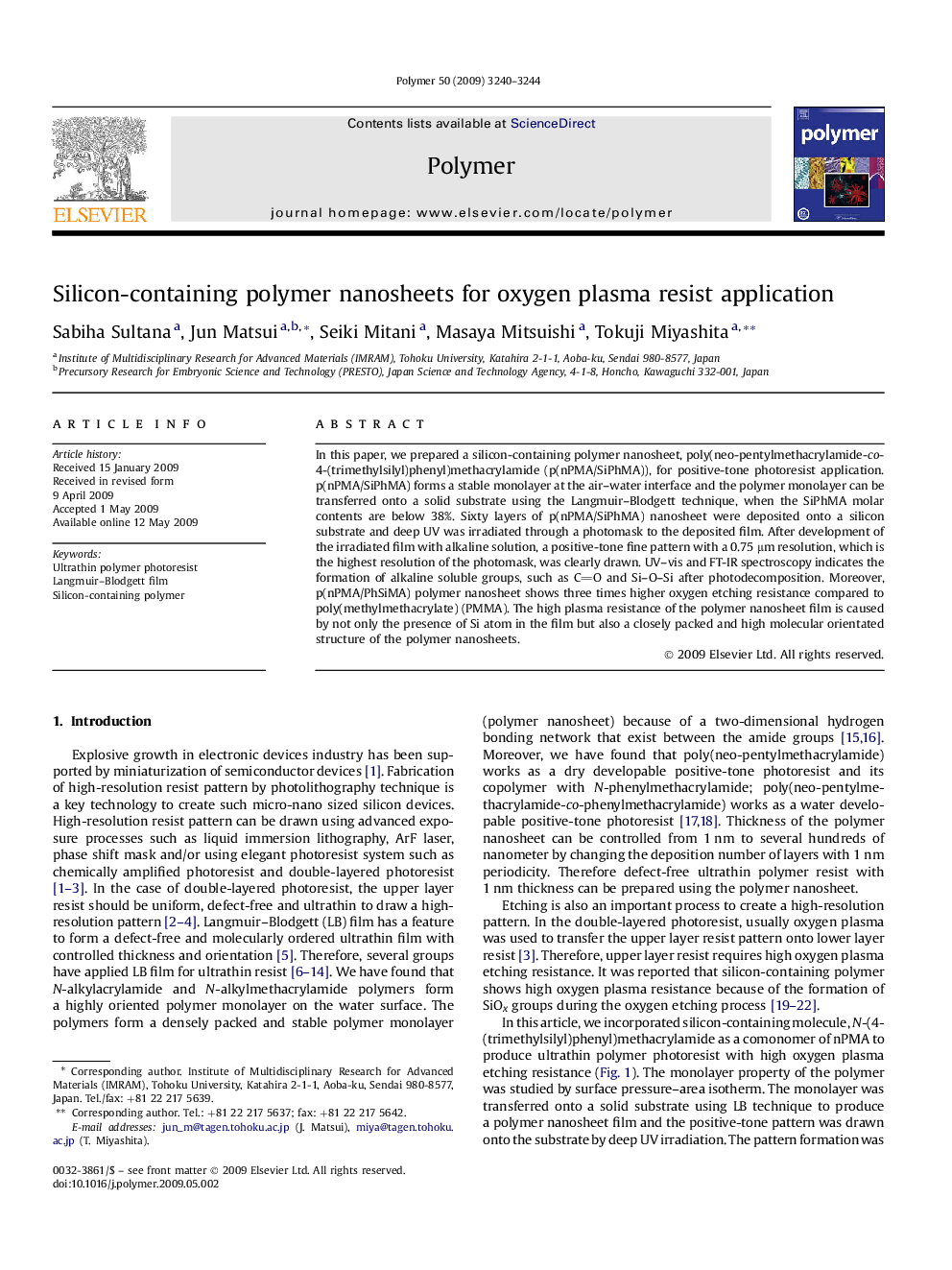| Article ID | Journal | Published Year | Pages | File Type |
|---|---|---|---|---|
| 5187808 | Polymer | 2009 | 5 Pages |
In this paper, we prepared a silicon-containing polymer nanosheet, poly(neo-pentylmethacrylamide-co-4-(trimethylsilyl)phenyl)methacrylamide (p(nPMA/SiPhMA)), for positive-tone photoresist application. p(nPMA/SiPhMA) forms a stable monolayer at the air-water interface and the polymer monolayer can be transferred onto a solid substrate using the Langmuir-Blodgett technique, when the SiPhMA molar contents are below 38%. Sixty layers of p(nPMA/SiPhMA) nanosheet were deposited onto a silicon substrate and deep UV was irradiated through a photomask to the deposited film. After development of the irradiated film with alkaline solution, a positive-tone fine pattern with a 0.75 μm resolution, which is the highest resolution of the photomask, was clearly drawn. UV-vis and FT-IR spectroscopy indicates the formation of alkaline soluble groups, such as CO and Si-O-Si after photodecomposition. Moreover, p(nPMA/PhSiMA) polymer nanosheet shows three times higher oxygen etching resistance compared to poly(methylmethacrylate) (PMMA). The high plasma resistance of the polymer nanosheet film is caused by not only the presence of Si atom in the film but also a closely packed and high molecular orientated structure of the polymer nanosheets.
Graphical abstractDownload full-size image
